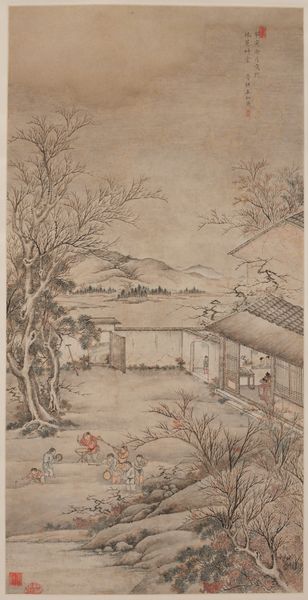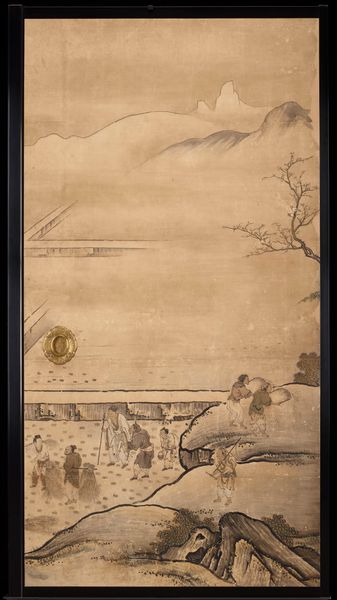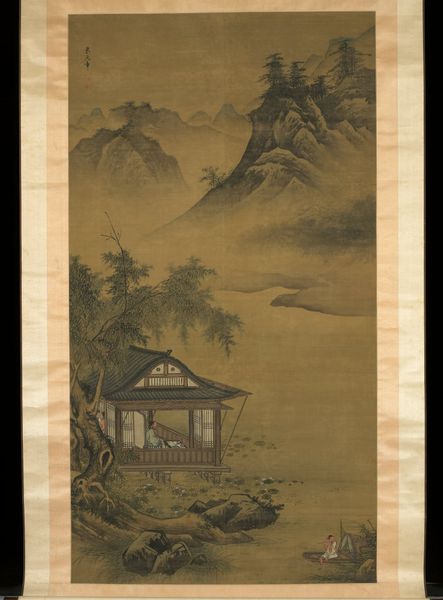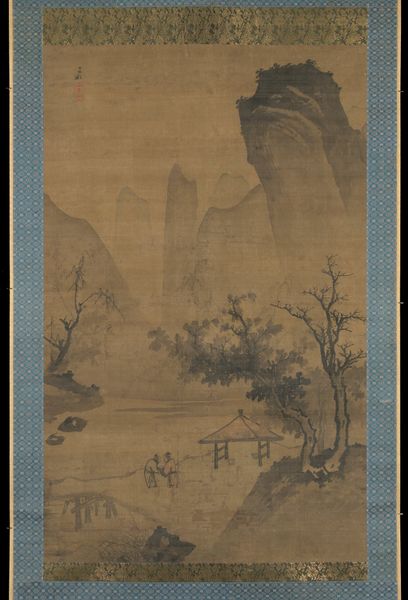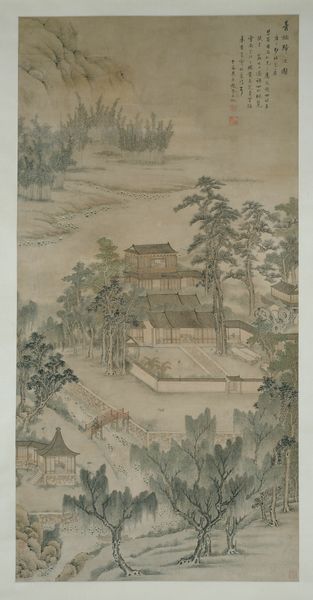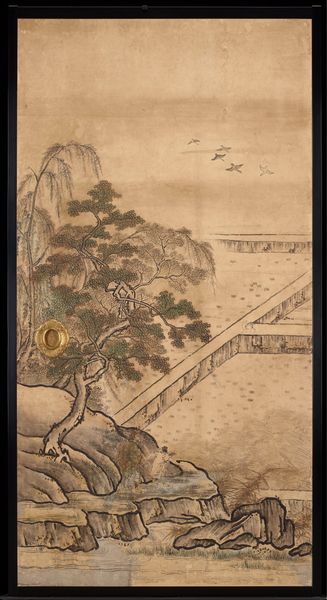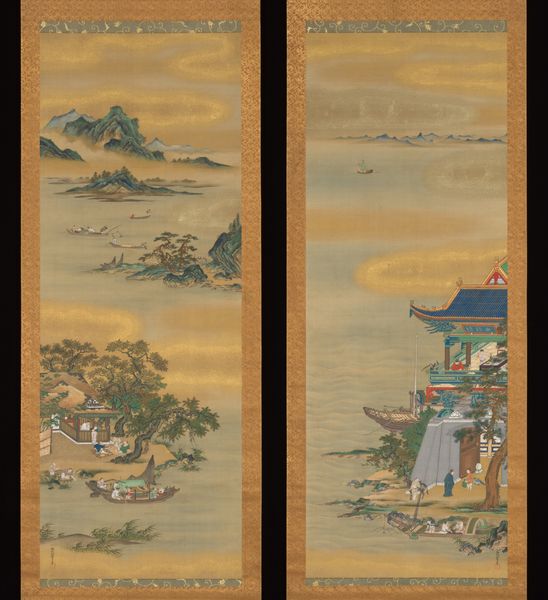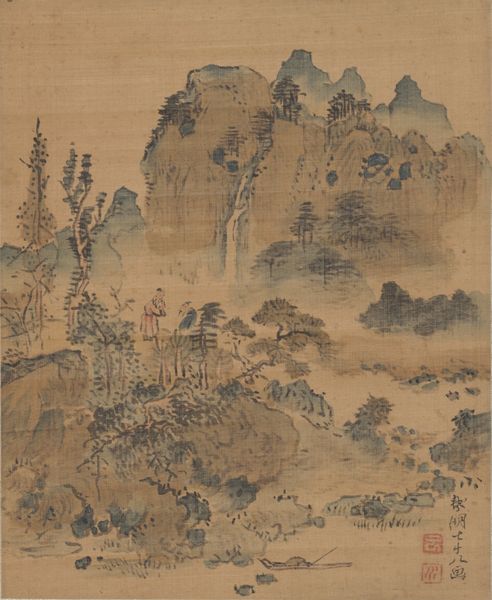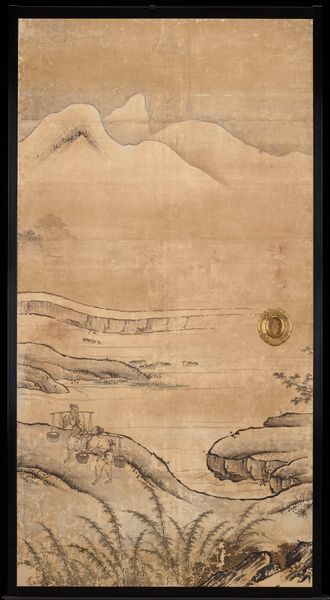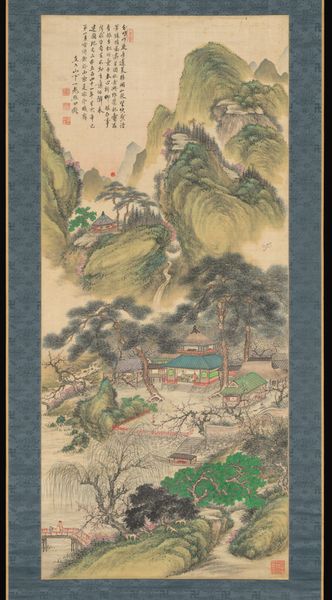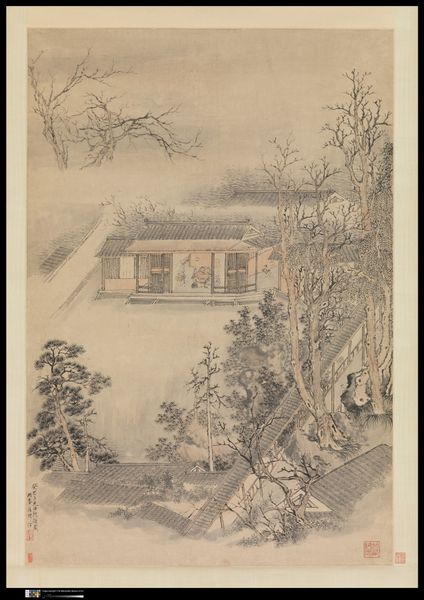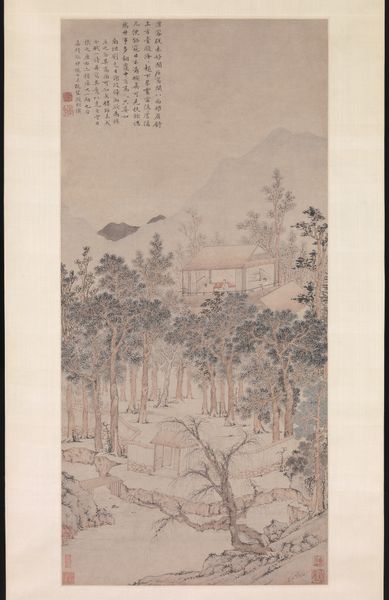![Winter [left from the set Rice Farming in the Four Seasons] by Kano Sanraku](/_next/image?url=https%3A%2F%2Fd2w8kbdekdi1gv.cloudfront.net%2FeyJidWNrZXQiOiAiYXJ0ZXJhLWltYWdlcy1idWNrZXQiLCAia2V5IjogImFydHdvcmtzL2MzZWRhMGM4LTM5ZWUtNGEyYy1hYTQ4LTZkYjNjNmUxOWFlYS9jM2VkYTBjOC0zOWVlLTRhMmMtYWE0OC02ZGIzYzZlMTlhZWFfZnVsbC5qcGciLCAiZWRpdHMiOiB7InJlc2l6ZSI6IHsid2lkdGgiOiAxOTIwLCAiaGVpZ2h0IjogMTkyMCwgImZpdCI6ICJpbnNpZGUifX19&w=3840&q=75)
Winter [left from the set Rice Farming in the Four Seasons] c. 1620s
0:00
0:00
painting, ink
#
medieval
#
ink painting
#
painting
#
asian-art
#
landscape
#
japan
#
ink
#
watercolour illustration
#
genre-painting
Dimensions: 76 x 39 1/4 x 4 in. (193.04 x 99.7 x 10.16 cm)
Copyright: Public Domain
Kano Sanraku painted this section of Rice Farming in the Four Seasons on gold-covered paper during the Edo period in Japan. It’s a serene and picturesque depiction of rural life, but don’t be fooled by the humble subject matter, its artist was affiliated with the Kano school, who were the pre-eminent painters to the Shogunate, and therefore the establishment, for hundreds of years. Sanraku’s screen is more than just a representation of winter. It's a window into the socio-political landscape of the time, and also a highly stylized and idealized representation of the common people. Look at the way the artist uses perspective and composition to create a sense of depth, while imbuing it with the cultural values of harmony and balance associated with Zen Buddhism, an important and influential institution at that time. Art historians consult a variety of sources to understand the artwork, including historical documents, literary works, and other visual materials. In the end, the meaning of art is always contingent on the social and institutional context in which it’s made and received.
Comments
minneapolisinstituteofart almost 2 years ago
⋮
These sliding door panels originally formed the four walls of a small reception chamber at Daikakuji, a Buddhist temple in northwest Kyoto that also served as the palace for Japan’s emperor. The panels form a continuous panorama from wall to wall and present various activities associated with rice cultivation: plowing, transplanting the rice, irrigating, threshing, and grinding. The didactic theme is derived from Chinese painting; agriculture, according to Confucian teachings, is the basis of a well-ordered society. Accordingly, when Japanese rulers adopted Confucianism as their ruling ideology, they also commissioned paintings that reflected social stability, morality, and government values. Although unsigned, these paintings were likely produced by Kano Sanraku. As head of the Kyoto branch of the influential Kano school, Sanraku counted several prominent aristocratic families and Buddhist monasteries, including Daikakuji, as key patrons.
Join the conversation
Join millions of artists and users on Artera today and experience the ultimate creative platform.

